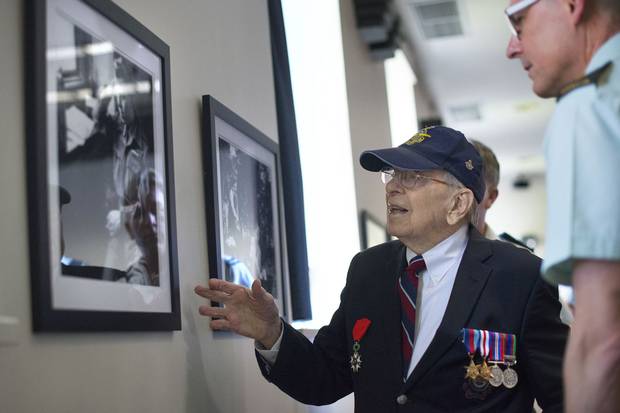On Jack Ford's first night in France, his tent flew open at 2 a.m. and a sergeant shouted at everyone to get out. "Really?" Mr. Ford said, thinking it was a prank played on new arrivals like him. He was interrupted by a deafening roar from a wooded area 30 metres away, as a battery of anti-aircraft guns began firing into the night sky at German planes.
It was the summer of 1944, in Normandy in the weeks after D-Day, and Mr. Ford just had his welcome to a combat zone, as his airfield was visited by "Jerry" – a German air raid.
"It was the biggest crash you ever heard, shooting up and exploding," Mr. Ford recalled. "So that was my introduction at 2 o'clock, all these guns going off because Jerry came over."
Mr. Ford, who was a photographer for Royal Canadian Air Force's No. 414 Squadron, is now 95. He is among 475 former military men and woman living at Sunnybrook Hospital's Veterans Centre.
He has in recent years donated many of his wartime photographic prints commemorating a time when men like him went off to fight the Nazis.
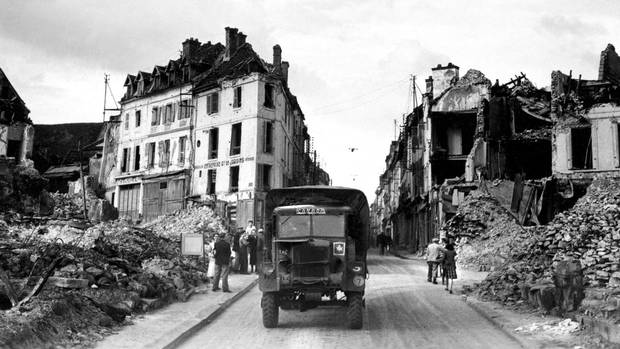
Jack Ford’s RCAF photography unit on the move, after it started operating out of French airfields liberated from German troops in 1944.
COURTESY OF JACK FORD COLLECTION
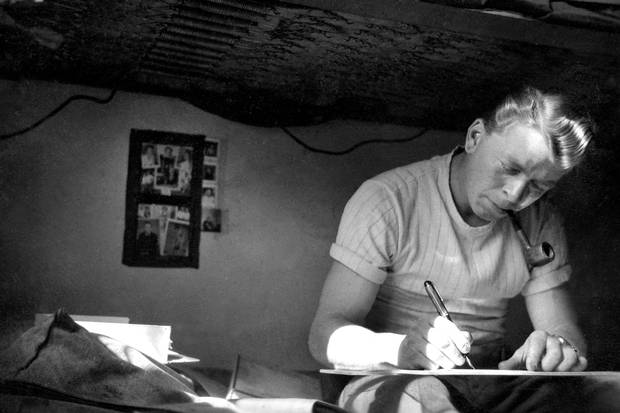
At a barracks in Germany toward the war’s end, Jack Ford writes to his parents. Letters had to pass through censors and took weeks to arrive.
COURTESY OF JACK FORD COLLECTION
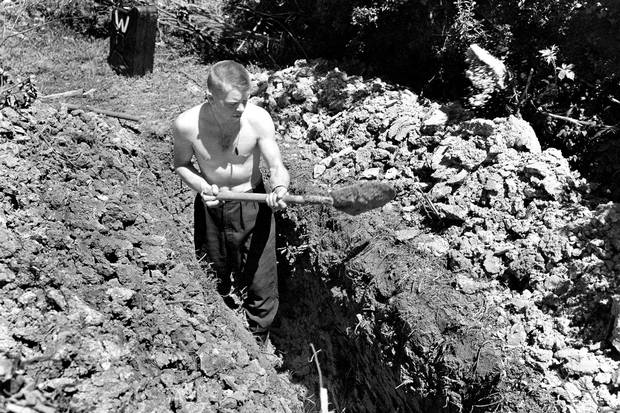
Summer, 1944: Jack Ford digs a trench the morning after an air raid on his first night in Normandy.
COURTESY OF JACK FORD COLLECTION
While he self-deprecatingly portrays himself as an ordinary and risk-averse person, people like Mr. Ford were low-profile but important cogs in the war. The Allied troops who landed on the continent in 1944 and fought their way from the hedgerows of Normandy to the cities of Germany or the polders of Holland needed to know who and what lay ahead of them.
The answer came from a little-celebrated military arm: aerial reconnaissance. Before there were drones, reconnaissance squadrons flew over German-held territory, snapping pictures of enemy formations, railways and artillery batteries. The film was developed by men like Mr. Ford, and their images compiled, analyzed and used to guide allied operations.
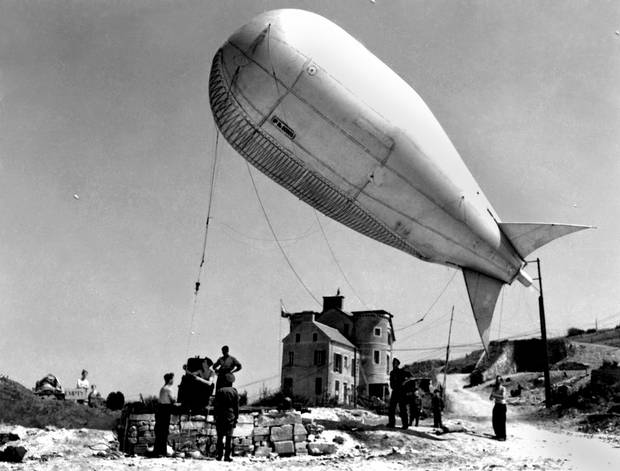
A tethered barrage balloon is deployed to ward German planes away from Allied ships unloading troops and supplies in Normandy.
COURTESY OF JACK FORD COLLECTION
He remembers the intense, frightful episodes that punctuated the more common, unglamorous tedium of military life: the long waits, the arbitrary decisions, the bad food.
Even in his civilian life, it was a different era. His parents were vaudeville performers and he was born in Oklahoma City, his mother, a New Brunswick woman, having met his father while she was touring in the United States. They eventually settled in Toronto, though Mr. Ford and his brother were mostly raised by his grandparents in East York while his parents were on tour.
He was seven when the Great Depression began. His parents were out of work. He remembered the lines at soup kitchens and people living in tents in the ravines of Toronto's Don Valley.
He liked drawing and apprenticed in a print shop, where he learned to operate the big plate-making cameras. It was then that Canada and the rest of the British Empire went to war against Nazi Germany in 1939. Mr. Ford enlisted in the RCAF even though he had been born in the U.S., which was not at war yet.
At the No. 1 Manning Depot in Toronto, in the Exhibition Grounds, he learned to march in step, to keep his mouth shut and got a lot of practice sweeping floors. He wasn't keen on shooting at people and, with his print shop background, got himself sent to Ottawa to learn to be a military photographer.
After a year in Ottawa, the students were called to the gym at 11 o'clock one night and told they would get two weeks of leave then would be shipped overseas.
He thought he would sail the Atlantic in a convoy but instead boarded a single troop ship that zig-zagged at sea in an attempt to evade submarine attacks. "I thought I was going to die before I got to war. I was just so scared of that ocean," he recalled.
After eight days they arrived safely in Scotland. Mr. Ford became part of a group of 14 photographers attached to the RCAF's No. 414 Squadron. Fit with nimble Spitfire fighter planes, the squadron flew photo reconnaissance missions and ground attacks in German-occupied France.
Mr. Ford and his colleagues loaded films in the Spitfires' cameras before each mission, retrieved the rolls after the aircraft landed, developed and printed the photos.
In 1942, the squadron supported Canadian troops in the bloody raid at Dieppe. The following year they were part of the massive effort to document France's northwestern coasts ahead of the D-Day landing.
The images he printed testified to the massive scale of the invasion. One picture for example, snapped the day after the June 6, 1944, landing, showed a field dotted with bomb craters and crowded with two dozen gliders, some crashed into each other, that had brought airborne soldiers to Normandy.
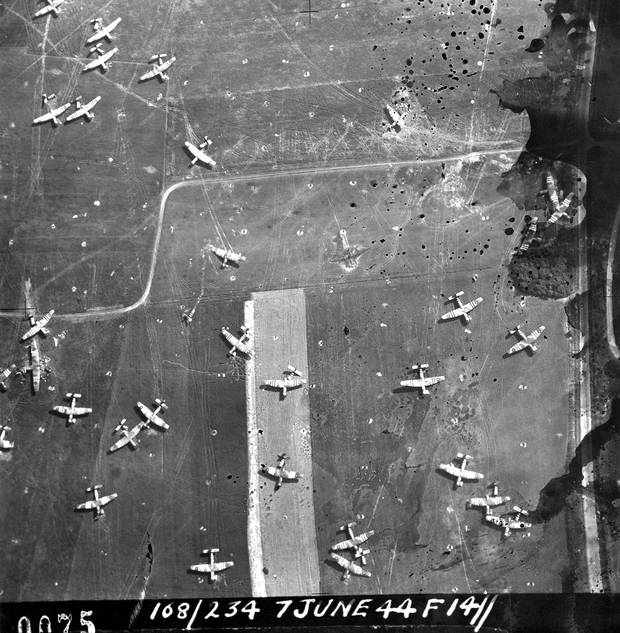
Allied gliders lie crashed on a field in Normandy, the morning after D-Day.
COURTESY OF JACK FORD COLLECTION
Once the invasion forces had moved inland and captured airstrips, 414 Squadron relocated to France. The photographers also followed, living in tents and using the cab of a truck as a darkroom.
One day, his commanding officer told him to check out a small airplane that circled over their airfield before landing. It was Winston Churchill, visiting the troops. He was joined by King George VI and Bernard Montgomery, the top British field commander in Europe, who, for security reasons, had travelled separately.
At the scene with his camera, Mr. Ford had the cheek to ask an aide to request that Churchill remove his cigar for a picture. He had better luck than Yousuf Karsh did while shooting his iconic Churchill portrait in Ottawa, when the British prime minister refused the same request. For Mr. Ford, he complied.
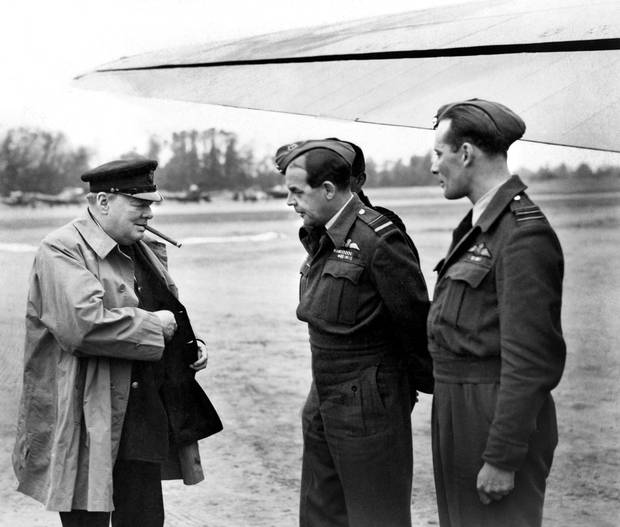
Winston Churchill looks for a match to light his trademark cigar while visiting RCAF 414 Squadron at a Normandy airfield in 1944.
COURTESY OF JACK FORD COLLECTION
By the end of 1944, the Allied armies were reaching the German border. Squadron 414 had followed the advance of the Canadian troops into the Netherlands and was now billeted in Eindhoven. During the holiday season, Mr. Ford remembered his unit listening to the radio broadcasts of the English-speaking Nazi propaganda announcer they had nicknamed Mary of Arnhem.
"This is not your war. You guys should go home," she said, addressing the Canadian troops. "Maybe we could come over tomorrow and wish you a merry Christmas and happy new year."
As she promised, the morning of Jan. 1, 1945, Mr. Ford was shaving when he heard planes flying low over the airfield. He thought they were Allied aircraft until they started strafing and bombing the Canadian planes on the ground.
He scrambled out of his shack, skipping and falling over the frozen ground. "This is it. This is the end," he thought. "Are you coming, Ford? Hurry up!" someone yelled from a trench, and Mr. Ford started crawling towards his comrades. The attack was part of Operation Bodenplatte, a last-ditch offensive by German aviation.
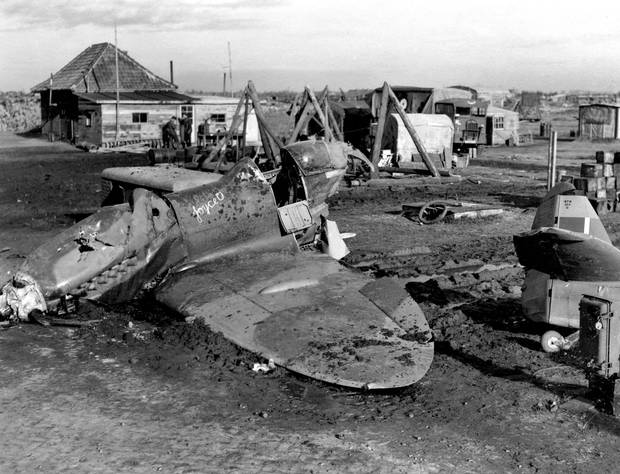
A damaged plane from the aftermath of a German raid on Jan. 1, 1945, at Eindhoven airport.
COURTESY OF JACK FORD COLLECTION

The remains of a German plane that took part in the raid.
COURTESY OF JACK FORD COLLECTION
Within months, the Third Reich would surrender and Mr. Ford's photos would now feature scenes of liberated Allied prisoners of war and civilian labourers and displaced people returning home. As for him, he had to cool his heels for another year at RCAF headquarters in London before he saw Canada again.
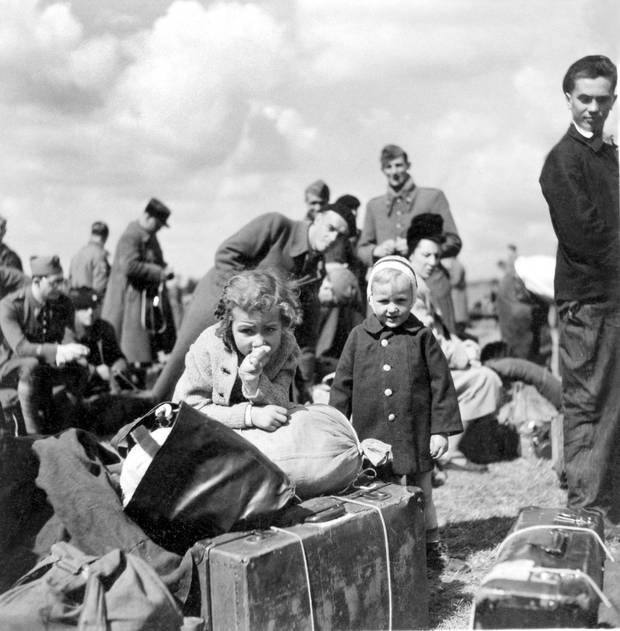
Former prisoners of war and displaced civilians wait for a transport plane to repatriate them.
COURTESY OF JACK FORD COLLECTION
On Saturday, Mr. Ford will attend the hospital's Remembrance Day service. He will see the thousands of Canadian flags planted on the hospital grounds, part of Sunnybrook's Raise A Flag campaign to fundraise for its veterans centre.
Nowadays at Sunnybrook, he keeps busy with art therapy, revisiting his past as his collection of wartime photos is scanned and organized.
The war, "was a different life for me," he recalled wistfully.

FRED LUM/THE GLOBE AND MAIL
LEST WE FORGET: MORE FROM THE GLOBE AND MAIL
